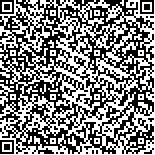| 摘要: |
| 目的 为改善现有研究对水稻种植负外部性承载效率关注不足的问题,在理论模型、评估方法、检验方式3个层面实现新的边际贡献。方法 文章尝试引入背包模型设计一个解决环境承载效率优势问题的算法框架,结合数学推演的逻辑框架给出3种算法的效率优势排序结果,并基于“双重维度”的检验原理,分别利用已有研究文献中局部地区的实证数据与AHP模型中的评分数据进行检验。结果 单调算法是实现水稻种植负外部性评估与承载的最优处理方法,不规则贪婪算法在处理效率与满意程度方面虽较单调算法存在一定改进空间,但仍较贪婪算法更易实现最优承载。结论 (1)农业部门应提高对水稻种植负外部性评估的认识程度;(2)统计部门应扩展水稻主产区水稻种植的相关数据;(3)政策部门应加强对水稻种植负外部性污染源的预防性宣传;(4)水稻产业不能走低产出的“老路”和先污染后治理的“弯路”,应走负外部性低的生态农业“新路”。 |
| 关键词: 水稻种植 负外部性 发展路径 背包模型 算法设计 |
| DOI:10.7621/cjarrp.1005-9121.20240308 |
| 分类号:F326.11 |
| 基金项目:国家社会科学基金项目“水稻主产区农业负外部性反思、评价及化解路径研究”(21BJY257) |
|
| RESEARCH ON EVALUATION METHOD OF RICE PLANTING NEGATIVE EXTERNALITY BASED ON KNAPSACK MODEL |
|
Zhou Rongji1,2, Xiao Li1, Wu Sibin2
|
|
1.School of Economics and Management, Hengyang Normal University, Hengyang 421002, Hunan, China;2.Business School, University of Texas at Great River Valley, Edinburg 78541, Texas, USA
|
| Abstract: |
| In the current rice production process, negative externalities have been caused. In order to alleviate the above problems, it is important to systematically reflect on the negative externalities of rice production, evaluate its cost with the knapsack model. Based on the model, a set of algorithmic mathematical framework was designed, and the negative externality was evaluated by monotone algorithm, greedy algorithm and improved irregular greedy algorithm respectively, thus providing useful reference for the algorithm design. At the same time, combined with the relevant data of China Agricultural Statistical Yearbook in 2022 and field investigation, the research conclusion was double tested by empirical measurement and AHP. Generally speaking, monotone algorithm (0.597 9) was the best method to realize the evaluation and carrying of negative externalities in rice production, which had high processing efficiency. Monotone algorithm occupied a relative advantage among the three algorithms. The irregular greedy algorithm (0.326 8) had further improvements in processing methods, processing efficiency and satisfaction compared with the monotonous algorithm, but it was still easier to achieve the optimal scheme than the greedy algorithm. Greedy algorithm (0.075 2) occupied a relative disadvantage because it greedily entailed the carrying capacity of negative externalities into the environmental carrying capacity (knapsack) and ignored the problems of value ranking and collocation. In summary, the design of the study gives policy makers some policy enlightenment. Firstly, agricultural departments should improve their comprehension of the negative externality. Secondly, the statistical department should expand the relevant data of rice production to improve the availability and completeness of the data. Thirdly, the policy department should strengthen the preventive propaganda of negative external pollution sources in rice production. Finally, rice industry should take the new road of ecological agriculture with low negative externality. |
| Key words: rice production negative externality development path knapsack model algorithm design |

